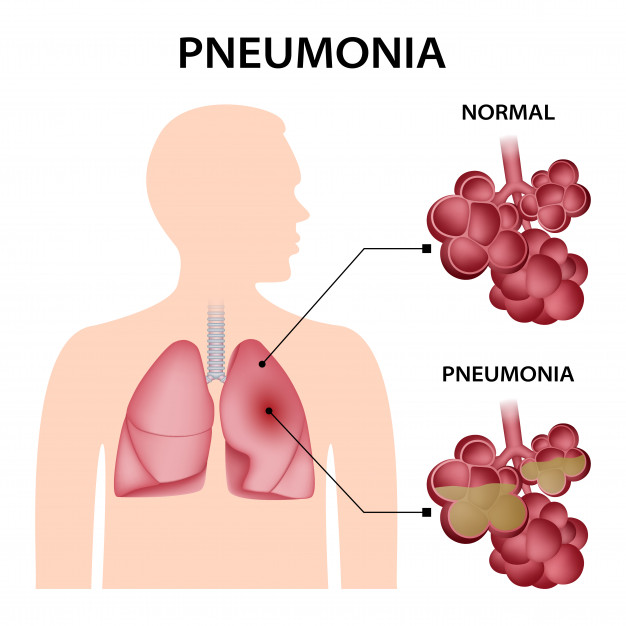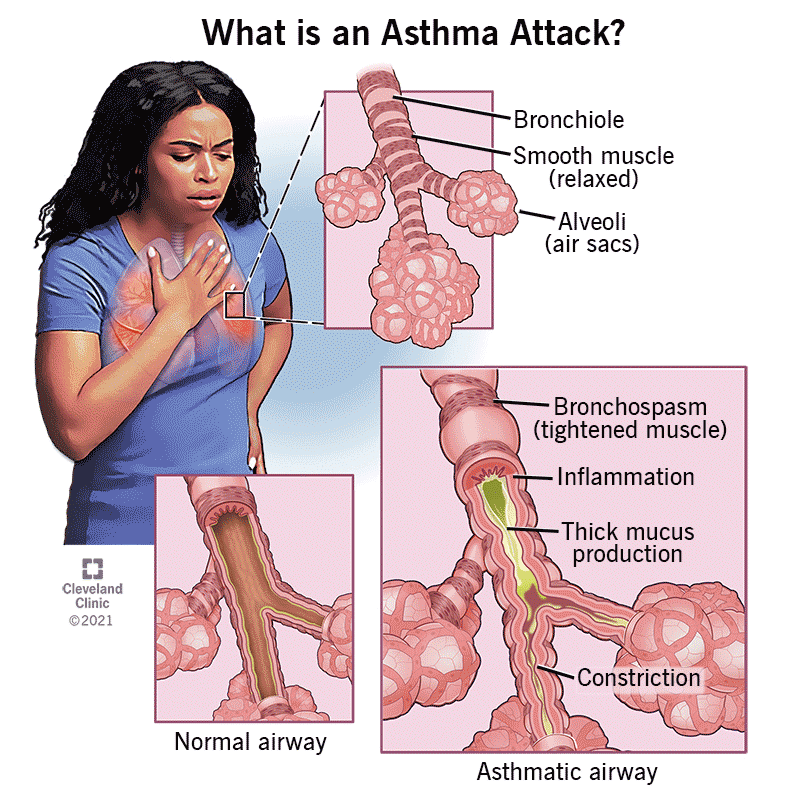The nurse is providing discharge teaching for a client diagnosed with right lower lobe pneumonia. What information should be provided for this client? (SELECT ALL THAT APPLY)
Avoid crowds during the cold and flu season.
Increase activities to previous level as soon as you get home.
Report temperature elevations to the healthcare provider.
Finish taking oral antibiotics as prescribed.
Electronic cigarettes are an alternative to tobacco while trying to quit.
Correct Answer : A,C,D
Choice A reason:
Avoiding crowds during the cold and flu season is crucial for a client recovering from pneumonia. Pneumonia weakens the lungs and the immune system, making the client more susceptible to infections. Crowded places increase the risk of exposure to respiratory infections, which can complicate recovery. According to UpToDate, patients with pneumonia should avoid exposure to infectious agents to prevent further complications.
Choice B reason:
Increasing activities to the previous level as soon as you get home is not advisable. Clients recovering from pneumonia need to gradually return to their normal activities. Overexertion can lead to fatigue and delay recovery. The Mount Sinai Health Library advises patients to rest and gradually increase activity levels as they regain strength.
Choice C reason:
Reporting temperature elevations to the healthcare provider is essential. Fever can be a sign of an ongoing infection or a complication. Normal body temperature ranges from 97°F to 99°F (36.1°C to 37.2°C). Any elevation above this range should be reported to ensure timely intervention.
Choice D reason:
Finishing taking oral antibiotics as prescribed is critical to ensure the infection is fully treated and to prevent antibiotic resistance. Incomplete antibiotic courses can lead to a resurgence of the infection and contribute to the development of resistant bacteria.
Choice E reason:
Electronic cigarettes are not a recommended alternative to tobacco while trying to quit. The safety and efficacy of e-cigarettes as a smoking cessation tool are still under investigation. The American Lung Association advises against using e-cigarettes due to potential health risks.

Nursing Test Bank
Naxlex Comprehensive Predictor Exams
Related Questions
Correct Answer is D
Explanation
Choice A reason:
Telling the patient to “try to go as long as possible before you press the button” is not advisable. PCA devices are designed to allow patients to manage their pain effectively by administering medication as soon as they begin to feel discomfort. Delaying the use of the PCA can lead to uncontrolled pain, which can be more difficult to manage later.
Choice B reason:
“Instruct your family or visitors to press the button for you when you are sleeping” is incorrect and potentially dangerous. Only the patient should press the PCA button to ensure that they are receiving the medication when they actually need it. Allowing others to press the button can lead to overmedication and serious side effects.
Choice C reason:
“Push the button every 15 minutes whether you feel pain at that time or not” is also incorrect. PCA devices are intended to be used on an as-needed basis. Pressing the button at regular intervals without experiencing pain can result in unnecessary medication administration and potential overdose.
Choice D reason:
“Push the button when you begin to feel pain, instead of waiting until the pain becomes worse” is the correct instruction. This approach helps to manage pain more effectively by preventing it from becoming severe. Early intervention with pain management can lead to better overall outcomes and patient comfort.
Correct Answer is ["A","B","C","D"]
Explanation
Choice A reason:
Exercise is a well-known trigger for asthma, particularly exercise-induced bronchoconstriction (EIB). During physical activity, especially in cold or dry air, the airways can narrow, leading to symptoms such as shortness of breath, wheezing, and coughing. Proper management and pre-exercise medication can help mitigate these effects.
Choice B reason:
Pollen is a common allergen that can trigger asthma symptoms. Pollen from trees, grasses, and weeds can cause allergic reactions that lead to asthma exacerbations. Seasonal variations in pollen levels can significantly impact individuals with asthma, making it important to monitor pollen counts and take preventive measures.
Choice C reason:
Animal dander, which consists of tiny flakes of skin shed by cats, dogs, and other animals, is a frequent asthma trigger. Proteins found in the dander, saliva, and urine of pets can cause allergic reactions and asthma symptoms. Reducing exposure to pets and maintaining a clean environment can help manage this trigger.
Choice D reason:
Emotional stress can also trigger asthma symptoms. Stress and strong emotions can lead to hyperventilation and changes in breathing patterns, which can exacerbate asthma. Stress management techniques and relaxation exercises can be beneficial in controlling asthma symptoms related to emotional stress.
Choice E reason:
Recent travel abroad is not typically considered a common trigger for asthma. While travel can expose individuals to different environmental factors and allergens, it is not a direct trigger like the other options listed. However, it is important for individuals with asthma to plan and prepare for travel to manage their condition effectively.

Whether you are a student looking to ace your exams or a practicing nurse seeking to enhance your expertise , our nursing education contents will empower you with the confidence and competence to make a difference in the lives of patients and become a respected leader in the healthcare field.
Visit Naxlex, invest in your future and unlock endless possibilities with our unparalleled nursing education contents today
Report Wrong Answer on the Current Question
Do you disagree with the answer? If yes, what is your expected answer? Explain.
Kindly be descriptive with the issue you are facing.
